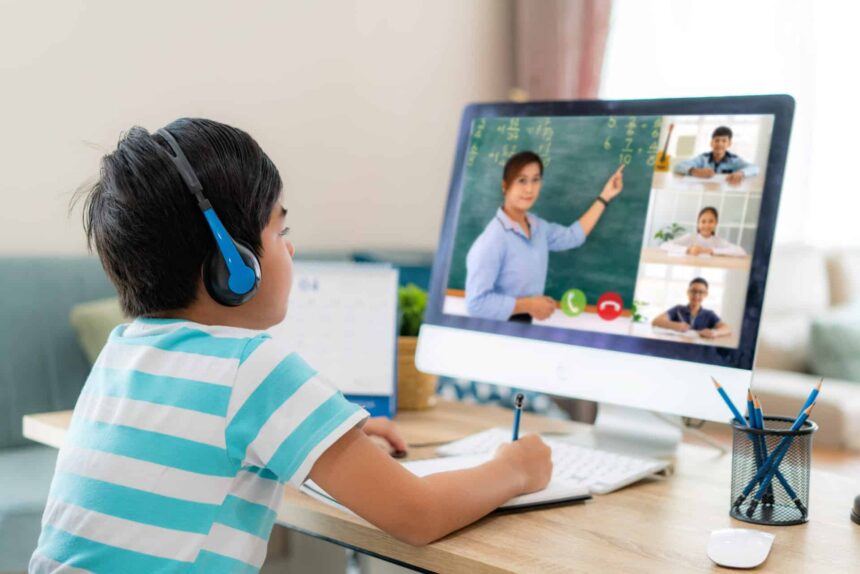Homeschooling has transformed significantly in recent years, thanks to the digital revolution. What was once a method reliant on textbooks and in-person instruction has evolved into a dynamic learning experience powered by online resources. With the internet offering countless educational platforms, tools, and communities, homeschooling families now have unprecedented access to quality learning materials. However, with so much available, it can be overwhelming to determine which resources are truly beneficial.
This guide will explore the most effective ways to utilize online resources in homeschooling, helping parents and students create a structured, engaging, and high-quality educational experience. Whether you’re just beginning your homeschooling journey or looking for ways to enhance your current methods, leveraging digital tools can make a significant difference in your child’s learning.
The Benefits of Using Online Resources for Homeschooling
One of the greatest advantages of homeschooling in the digital age is the vast selection of online tools that cater to different learning styles. Whether a child learns best through visual aids, interactive exercises, or auditory explanations, there is an abundance of options available.
Online educational platforms provide flexibility, allowing students to learn at their own pace. This can be especially helpful for children who need additional time to grasp certain concepts or for those who wish to accelerate their studies. Moreover, digital resources often come with built-in assessments, enabling parents to track progress and identify areas that need improvement.
Another major benefit is the ability to connect with a broader learning community. Many homeschooling families utilize virtual co-ops, discussion forums, and live classes to provide social interaction and group learning opportunities. These connections can help children feel more engaged and motivated while also allowing parents to share resources and support each other.
Choosing the Right Online Resources
With so many educational websites and apps available, selecting the right ones for your homeschooling curriculum can be challenging. The key is to focus on quality, credibility, and alignment with your child’s learning goals.
Start by identifying your child’s learning needs. Are they struggling with math? Do they need extra help with reading comprehension? Knowing where to focus will make the selection process easier. Websites like Khan Academy, Coursera, and Outschool offer comprehensive courses in various subjects, catering to different learning levels.
It’s also essential to verify the credibility of the source. Look for platforms with qualified educators, positive reviews, and regularly updated content. Free and paid resources exist, so it’s a good idea to test a few before committing to any subscriptions. Many websites offer free trials, which can help you determine whether they fit your child’s learning style.
Structuring an Online-Based Homeschooling Curriculum
A well-structured curriculum is crucial for successful homeschooling. Online resources can serve as a supplement or the foundation of your curriculum, depending on your teaching approach. However, it’s important to maintain balance and structure to ensure a comprehensive education.
Begin by setting clear learning objectives. Outline subjects, topics, and skills your child needs to master within a specific timeframe. Many online platforms offer pre-made lesson plans that can serve as a helpful starting point. Consider incorporating a mix of video lessons, interactive exercises, quizzes, and hands-on projects to keep the learning experience engaging.
Additionally, time management plays a crucial role in homeschooling. Use digital planners or homeschooling apps to create a schedule that includes lessons, breaks, and extracurricular activities. Consistency is key, and having a structured daily routine will help maintain focus and motivation.
Interactive and Engaging Learning Tools

Keeping children engaged in homeschooling requires creativity and variety. Interactive learning tools, such as gamified educational apps, virtual field trips, and augmented reality lessons, can make subjects more exciting and memorable.
For example, platforms like Duolingo help children learn new languages through fun challenges, while sites like Prodigy turn math exercises into an adventure game. Virtual reality experiences offered by Google Expeditions allow students to explore historical landmarks, the solar system, and even microscopic cells—all from home.
Hands-on learning is also possible with digital resources. Science experiments, coding projects, and art tutorials can be accessed through platforms like YouTube, Scratch, and DIY.org. Encouraging creativity alongside academics fosters a well-rounded education and keeps students motivated.
The Role of Parents in Digital Homeschooling
While online resources provide excellent educational content, parental involvement remains essential. Monitoring screen time, ensuring content quality, and guiding children through lessons are crucial responsibilities. Parents should also facilitate discussions and encourage critical thinking, rather than relying solely on digital tools.
Creating a balance between online and offline learning experiences is important. Outdoor activities, reading physical books, and engaging in hands-on projects help reinforce knowledge in a more tangible way. Additionally, setting screen time limits prevents digital fatigue and promotes a healthier learning environment.
Another role parents play is fostering self-discipline and independence. Teaching children how to research effectively, manage their schedules, and set learning goals empowers them to take ownership of their education. This not only prepares them for academic success but also equips them with essential life skills.
Overcoming Challenges in Online Homeschooling
Despite the many benefits of digital homeschooling, challenges can arise. Common obstacles include distractions, lack of motivation, and technical issues. To combat distractions, designate a quiet and organized learning space free from unnecessary interruptions.
Encouraging motivation can be achieved by setting goals and rewarding achievements. Whether it’s earning extra screen time, a special outing, or simple praise, recognizing accomplishments keeps students engaged. Additionally, mixing up the routine by incorporating different teaching methods helps maintain interest.
Technical difficulties, such as slow internet connections or platform glitches, are inevitable. Having backup plans, such as printed worksheets or offline educational activities, ensures that learning can continue without major disruptions.
Conclusion
Homeschooling in the digital era presents endless opportunities for enriching education. By effectively utilizing online resources, parents can create a customized learning experience that caters to their child’s unique needs. From interactive tools to structured lesson plans, digital learning enhances homeschooling while offering flexibility and convenience.
However, success in digital homeschooling requires a balanced approach. Parents should remain actively involved, integrate both online and offline learning methods, and continuously adapt to their child’s evolving educational needs. With the right resources and strategies, homeschooling can be an incredibly fulfilling and effective way to educate children in the modern world.
